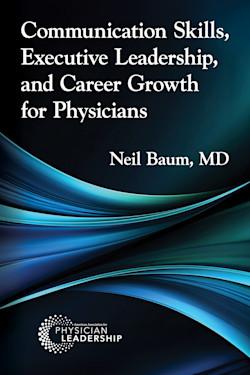Summary:
Physicians must adapt to rapid changes in medicine or risk losing patients. Regularly reassessing and updating practice methods is essential for continued success in healthcare.
If you travel with a GPS, it’s likely you’ve had this happen. Your GPS is programmed to get you to your destination in a safe and reliable way until you miss a turn or an exit on the freeway. You go straight instead of turning where the system wants you to turn, and in an irritated voice, the GPS responds with “recalculating route.”
It’s amazing how human the equipment sounds when you’ve gone against its recommendation. Maybe that happens in your medical practice, too. Your hospital does something like start hiring physicians that will compete with your practice, or an insurance company wants to renegotiate your contract and reduce your reimbursement. You find that you may be forced to “recalculate your route.”
It’s possible, however, that there is a good reason for taking a new path instead of the familiar trail. Maybe you’ve been going the distance in your medical practice and using the same route or skills that you learned decades ago in medical school or in your residency or fellowship training. Maybe it’s time to change the direction or simply to recalculate your route.
THE INTERNET
Probably nothing has changed the course and direction of modern medicine more than the Internet. The Internet has leveled the playing field between doctors and patients. Just a few decades ago, physicians had all of the information, and patients merely accepted everything that the doctor told them. That was the day of coming to the doctor with a chief complaint, having an examination, and receiving a prescription, with the doctor patting the patient on the back and offering to see him or her again in a few weeks.
Not today! The modern patient arrives in the office with a briefcase or folder full of material on his or her medical problem that the patient downloaded from the Internet. The patient has as much information as the doctor — or even more. Yes, much of it is inaccurate or not from credible sources, but, nonetheless, the patient has medical information. The doctor, therefore, must take into account the information that the patient has, sort out what is accurate and what is not, and then make recommendations and a plan of action that take into consideration the knowledge that the patient brings to the doctor–patient encounter. It is time to recalculate your route regarding the patient encounter: you can expect every patient is going to be Internet savvy, and you will no longer be the only one in the equation that has all of the information.
AFFORDABLE CARE ACT
In the past we enjoyed low volumes of patients and very acceptable reimbursements and profit margins. Not today! The passage of the Affordable Care Act means that between 20 and 40 million patients who were previously uninsured will be added to the healthcare system. Many of these previously uninsured patients will be older and sicker and require more time and medical resources. Compounding this situation is that there is no increase in the number of physicians being produced in our medical schools to care for this large number of patients that will be added to the healthcare system. As a result we will have to recalculate our route. We will have to become more efficient and be able to see more patients in the same amount of time, with the same staff, and yet preserve patient satisfaction.
FROM THE OPERATING ROOM TO THE OFFICE
Just a few years ago most procedures were conducted in the hospital, the operating room, or in outpatient surgery centers. Not today. More doctors are moving to an office-based practice where procedures once done in the hospital are now performed in the office setting. Thirty years ago, I performed five to six prostate operations a month in the hospital. Today, I perform a microwave procedure in the office under a local anesthetic. I estimate that in the near future 80% of all procedures will be done in the office or in one-day surgery centers, not in hospital operating rooms. It’s time to recalculate your route if your route has been to make extensive use of the operating rooms in your hospital.
USE OF A SCRIBE
In the past, doctors would take the history of the present illness, the medical history, and the review of systems, followed by the physical examination and then institution of the treatment plan. For most physicians, the first encounter with a new patient can take 30 to 45 minutes. It is hardly a good use of the doctor’s time to ask about previous surgical procedures, medications and over-the-counter supplements used, and how many cigarettes and alcoholic beverages are consumed each day. This can be done by someone else who is paid a much lower salary than the physician.
A scribe shadows a physician and takes notes either in the chart, or, better yet, on the computer, thus freeing the doctor to have more eye-to-eye contact with the patient and eliminating the need to have his or her face turned to the computer.
The scribe interacts with a new patient after the doctor introduces him- or herself to the patient. The scribe then takes the history of the present illness, and records the past medical history and the review of systems. While the scribe completes the evaluation of the new patient, the doctor can see several other patients or do a short procedure.
If you aren’t using a scribe, it’s time to recalculate your route and consider hiring someone else to gather this information from new patients. Remember, doctors should do what only doctors can do, and delegate all other activities.
ANCILLARY INCOME
Only a few decades ago, doctors received a fee for their services, which included seeing patients in the office and performing procedures in the hospital. There was no opportunity for any additional income. Today it is different. We now have an opportunity to earn additional income by owning diagnostic equipment such as CT scanners, having in-office laboratories, and owning outpatient surgery centers. This opens up revenue streams that can compensate for decreased reimbursements that nearly every practice faces. If you don’t have any additional revenue streams beside the fees that your receive for the face-to-face care you provide, then recalculate your route.
USING NURSE PRACTITIONERS, MEDICAL ASSISTANTS, AND PHYSICIAN ASSISTANTS
Doctors for the most part are maxed out. They don’t have enough time to see the patients they already have. As recently as 100 years ago, nurses were not allowed to even take a patient’s blood pressure. Now physician assistants are assisting doctors and providing care for patients under a physician’s supervision, making the doctor more efficient and more productive. If you are micromanaging your practice and doing everything yourself, then it’s time to recalculate your route. It is time to delegate to nurse practitioners, medical assistants, and physician assistants. Again, what can easily be done by others should not be done by physicians.
OPEN SURGERY TO ROBOTIC SURGERY
Surgery has a long tradition of change and innovation. However, nothing has changed the course of modern surgery away from the traditional open surgical procedure more than the use of laparoscopy and then robotic surgery. Although the results of robotic surgery as compared with open surgery are controversial, the public and the media have touted the advantages of robotic surgery over traditional open surgery. If you are a surgeon and aren’t offering robotic surgery to your patients, it may be time to recalculate your route.
HOUSE CALLS TO OFFICE AND BACK TO HOUSE CALLS
Seventy-five years ago, doctors routinely made house calls. Then there came a period when doctors believed that they needed more equipment than they could carry in their black bags and requested that the patients come to the office or meet them in the emergency department. Today the pendulum is swinging back to doctors once again making house calls. There is a budding industry of physicians who only conduct house calls and have reduced their overhead to their cell phone and their automobile. If you are in primary care, you may want to recalculate your route and offer house calls to your patients.
FEE-FOR-SERVICE TO CONCIERGE MEDICINE
Doctors have watched their reimbursements decrease and their incomes go south. (This might also be a reflection of poor investments and poor financial planning.) As a result, some established physicians with upscale patients who require more medical care are offering 24/7 access to the physician at an annual fee ranging from $1500 to $3000. This concept, concierge medicine, is catching on, and is attractive to physicians who don’t want to be involved with the paperwork that has been inundating the medical profession in the past two decades. If you have patients who can afford the annual fee and you are willing to offer this kind of service, you may consider recalculating your route.
YELLOW PAGES TO SOCIAL MEDIA
I began practice 35 years ago, and the first thing I did after placing my name on the door of my office was to obtain a small Yellow Pages ad in the local phone book. These days, I doubt even five patients per year locate me via the Yellow Pages. But hundreds are able to find me through the use of Google and social media. If you still have more than your name, address, and phone number and perhaps your practice Web site in small print in the Yellow Pages, then it’s time to recalculate your route.
PAPER TO ELECTRONIC MEDICAL RECORDS
For many years the standard of care was for physicians to make notes on paper for each patient and keep a file for each patient in a large filing cabinet. The computer changed all of that. We had to recalculate our paper route!
Bottom Line: Medicine is changing at a very rapid pace. It is difficult for physicians to keep up with all of these changes. However, the physician who doesn’t make modifications and changes is going to find him- or herself without patients to care for. Therefore, it is necessary to take a look at our practices from 20,000 feet up. If we don’t like what we see, then it just may be time to recalculate our route.
Excerpted from Communication Skills, Executive Leadership, and Career Growth for Physicians by Neil Baum, MD.
Topics
Self-Awareness
Influence
Comfort with Visibility
Related
Career Paths for Medical WritersHow to Let Go When a New Hire Takes on Your Old ResponsibilitiesChampioning Physician Leadership Development: AAPL's Five-Decade Commitment Meets Healthcare's Critical MomentRecommended Reading
Self-Management
Career Paths for Medical Writers
Professional Capabilities
Championing Physician Leadership Development: AAPL's Five-Decade Commitment Meets Healthcare's Critical Moment
Professional Capabilities
“Profiles in Success”: Certified Physician Executives Share the Value and ROI of their CPE Education
Motivations and Thinking Style
The Surprising Success of Hands-On Leaders
Motivations and Thinking Style
Become an Octopus Organization


